G3MSB Controller Interfacing¶
The G3MSB controller contains a reduced set of I/O interfaces which are discussed in detail in the following sections. This board is intended for the application which absolutely requires a custom I/O card so it provides a standard mikroBUS form factor connector pad. The table below lists the on board connectors and pins, ports and busses available on those connectors.
Connector |
Port(s) |
|---|---|
See location annotatations in the image below showing I/O connectors listed in the previous table.
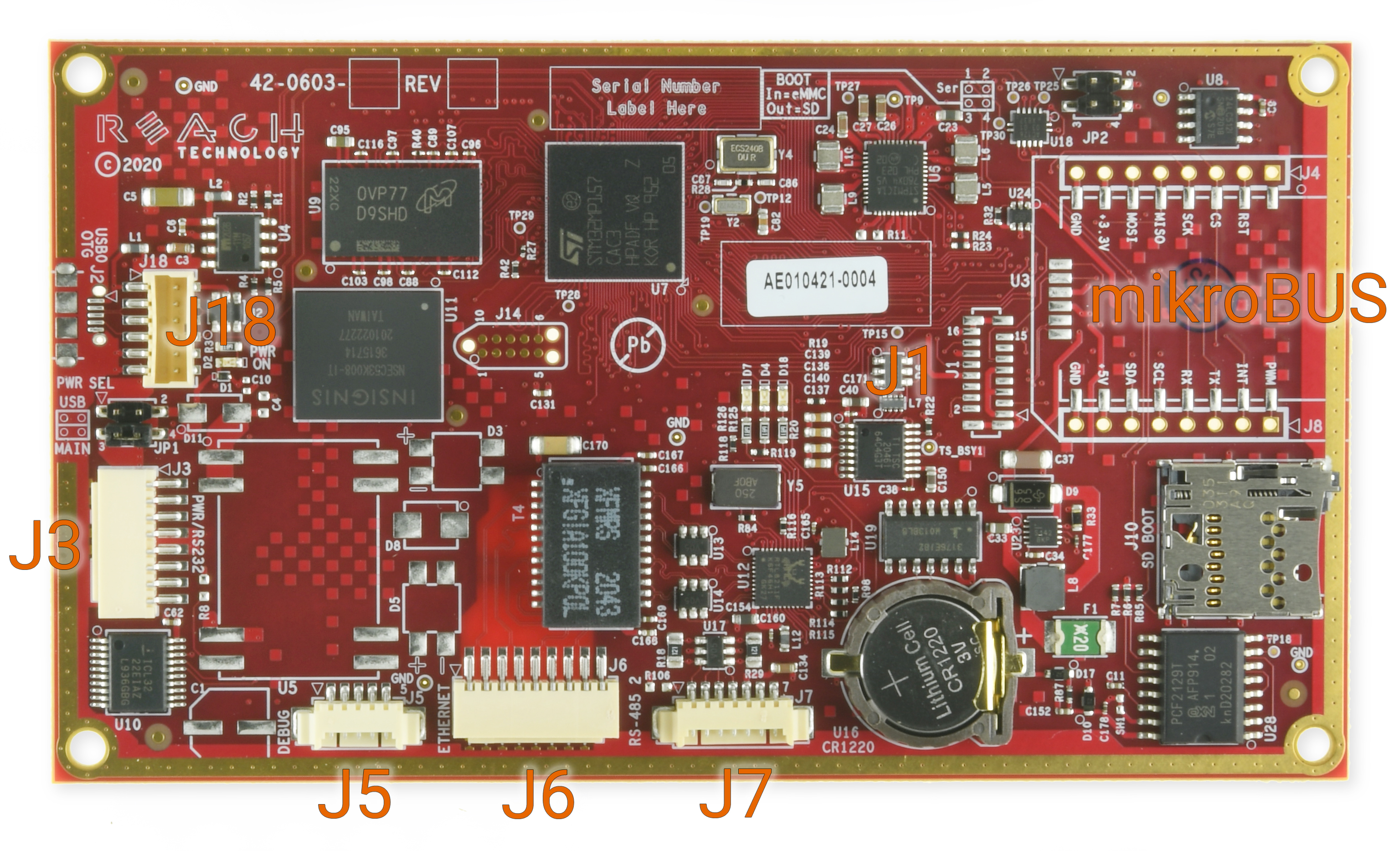
G3MSB I/O Connector Locations¶
Power¶
Connect DC power for the G3MSB controller and the touch panel via J31. Although the exact power consumption depends on peripherals as well as the particular touch panel, generally, the package will consume approximately 7W to 15W when the backlight is active.
G3MSB controllers must be driven with a 5V, 3A DC power source.
Important
The G3MSB controller has an option for PoE (power over ethernet). This is unstuffed by default so you would use J3 to power the module. If you want to use PoE, please contact Reach Technology.
Footnotes:
- 1
Use Reach Technology “Y” cable, PN 23-0160-18 for 5 VDC.
Console (Debug) Port¶
Access the controller debug interface via J52. This RS-232 level serial port runs at 115.2k Baud, 8-bit, no parity, 1 stop bit. This port should always be connected during product development. You will need a terminal emulator program or shell that understands ANSI color escape sequences. Examples include Tera Term or PuTTY3 (Windows) or picocom in a bash shell (Linux).
Footnotes:
RS-232 Port¶
A standard RS-2324 port is also available on J35.
Footnotes:
GigaBit Ethernet¶
A standard 1000baseT network port is available on J66.
Footnotes:
- 6
Use Reach Technology ethernet cable, PN 23-0148-12, if you do not wish to build custom cables.
USB 2.0 OTG Port¶
Note
Currently, the OTG port is only supported in host mode. Contact Reach Technology if you need to use it in device mode.
Connect standard USB 1.0 and USB 2.0 peripherals7 to the USB host port (J189). If you want to use the G3MSB as a USB device8 rather than as a host, you can use this port as it is capable of being either a host port9 or a device port10.
Footnotes:
- 7
Some touch panels with HID touch controllers use the USB host port. If you need additional USB 2.0 ports, put a hub on your I/O card and connect it here.
- 8
For example as a Linux Network Gadget for peer to peer USB networking.
- 9(1,2)
Use Reach Technology USB Host cable, PN 23-0167-12, if you do not wish to build custom cables.
- 10
Use Reach Technology USB Device cable, PN 23-0168-12, if you do not wish to build custom cables.
Todo
add USB expansion (J1) section
Todo
add CAN/USB expansion (U3) section
RS-485 Port¶
RS-485 peripherals can be connected to J711. The default mode is full duplex.
Footnotes:
- 11
Use Reach Technology RS-485 flying leads cable, PN 23-0145-10, for prototyping.
mikroBUS Pads¶
Todo
write this
Connector Pinouts and Part Numbers¶
The following sections provide the pinout for each connector and part number for the required mating plug12.
Footnotes:
- 12
The mikroBUS pads are standard 0.1” pitch through-hole pads. If using a standard, off the shelf, Mikroe Click board, you can either solder it directly to the G3MSB controller or use standard 8 pin, single row socket headers.
Todo
document J1 and U3 from the Reach Custom Module section of the print
J3¶

G3MSB Power / RS-232 Connection¶
8 pin Pico-SPOX, MOLEX Part # 87439-0800
Pin |
Signal |
|---|---|
1 |
TxD output ESD protected13 |
2 |
RxD input ESD protected13 |
3 |
GND (power and communications) |
4 |
VIN 5VDC input, powers the board |
5 |
VIN 5VDC input, powers the board |
6 |
GND (power and communications) |
7 |
GND (power and communications) |
8 |
GND (power and communications) |
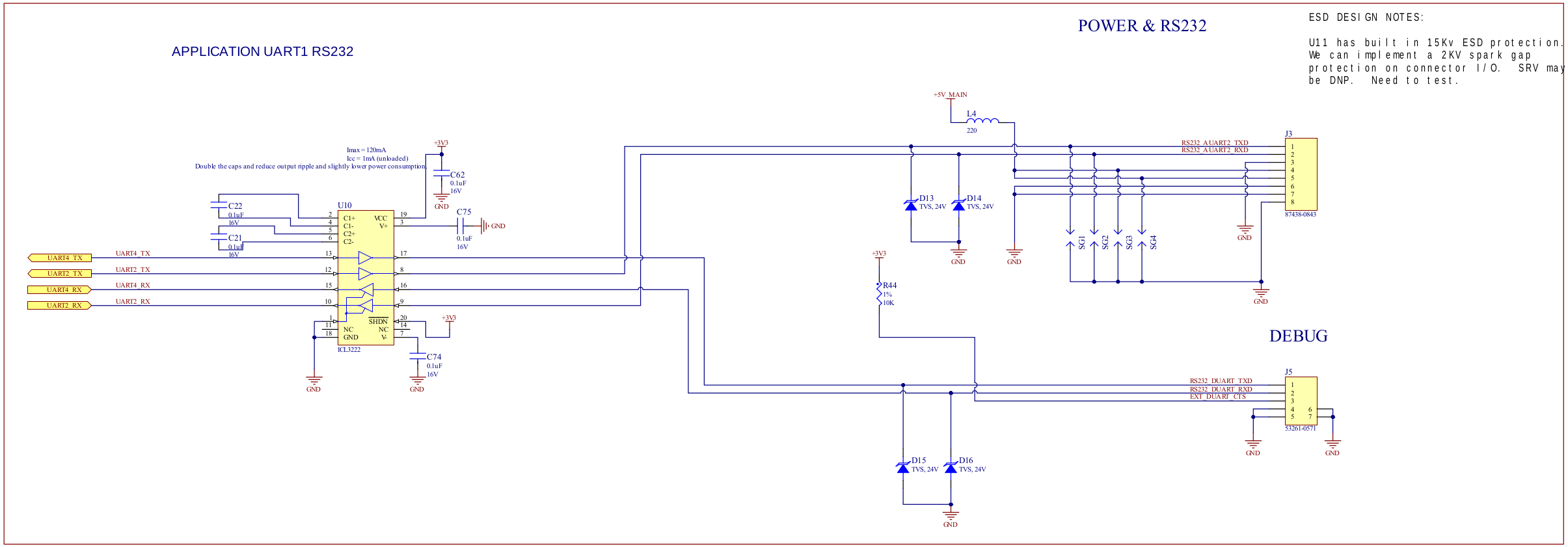
G3MSB Debug Interface, Power, RS-232 Schematic¶
Footnotes:
J4¶
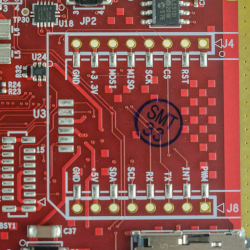
Pin |
Signal |
|---|---|
1 |
NC |
2 |
RST (reset) |
3 |
CS (chip select) |
4 |
SCK (SPI clock) |
5 |
MISO (SPI master in slave out) |
6 |
MOSI (SPI master out slave in) |
7 |
+3.3V |
8 |
GND |
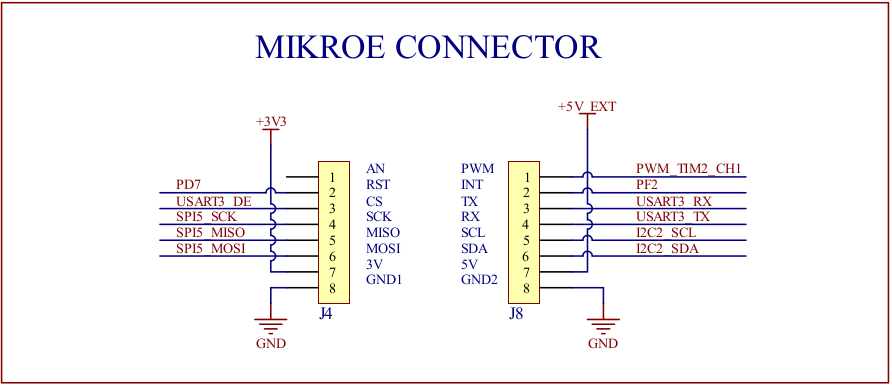
J5¶
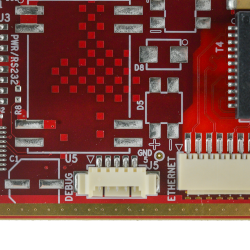
G3MSB Debug Interface Connection¶
5 pin PicoBlade, MOLEX Part # 51021-0500
Pin |
Signal |
|---|---|
1 |
TxD output ESD protected14 |
2 |
RxD input ESD protected14 |
3 |
CTS |
4 |
GND |
5 |
GND |

G3MSB Debug Interface, Power, RS-232 Schematic¶
Footnotes:
J6¶
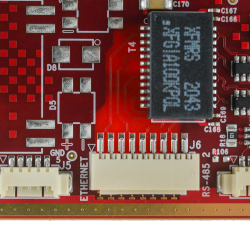
G3MSB GigaBit Ethernet Connection¶
9 pin Pico-SPOX, MOLEX Part # 87439-0900
Pin |
Signal |
|---|---|
1 |
Bi-Directional pair D1+ |
2 |
Bi-Directional pair D1- |
3 |
Bi-Directional pair D2+ |
4 |
Bi-Directional pair D2- |
5 |
Bi-Directional pair D3+ |
6 |
Bi-Directional pair D3- |
7 |
Bi-Directional pair D4+ |
8 |
Bi-Directional pair D4- |
9 |
Ethernet Shield/GND |
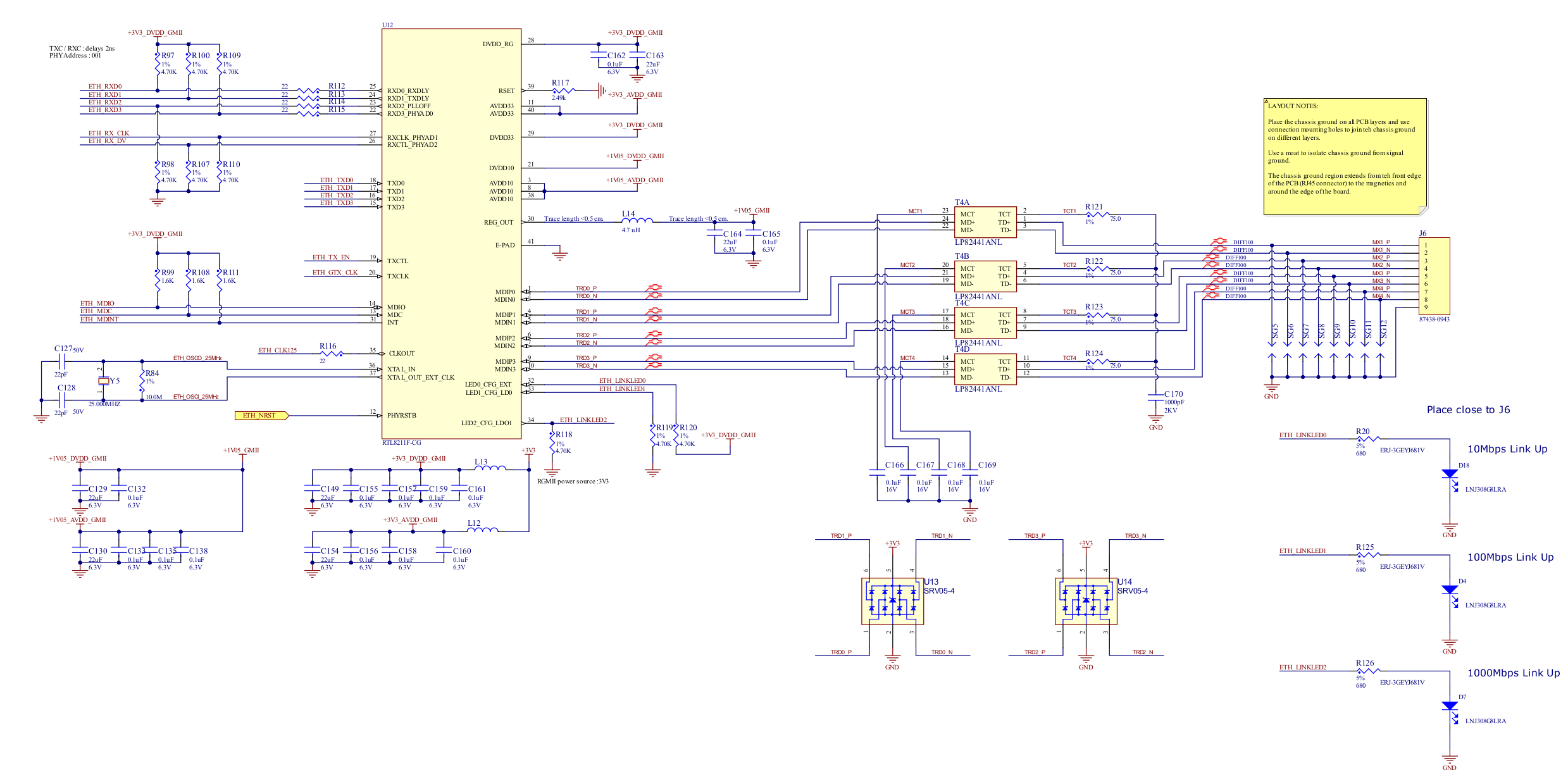
G3MSB GigaBit Ethernet Schematic¶
J7¶

G3MSB RS-485 Port Connection¶
7 pin PicoBlade, MOLEX Part # 51021-0700
Pin |
Signal |
|---|---|
1 |
Rx H |
2 |
Rx L |
3 |
Tx L |
4 |
Tx H |
5 |
+5V |
6 |
GND |
7 |
GND |

G3MSB RS-485 Port Schematic¶
J8¶

Pin |
Signal |
|---|---|
1 |
PWM (pulse width modulation) |
2 |
INT (interrupt) |
3 |
TX (UART transmit) |
4 |
RX (UART receive) |
5 |
SCL (I2C clock) |
6 |
SDA (I2C data) |
7 |
+5V |
8 |
GND |

J18¶

G3MSB USB 2.0 OTG Port Connection¶
6 pin Pico-SPOX, MOLEX Part # 87439-0600
Pin |
Signal |
|---|---|
1 |
+5V |
2 |
Data - |
3 |
Data + |
4 |
USB_OTG_ID15 |
5 |
GND |
6 |
GND shield |
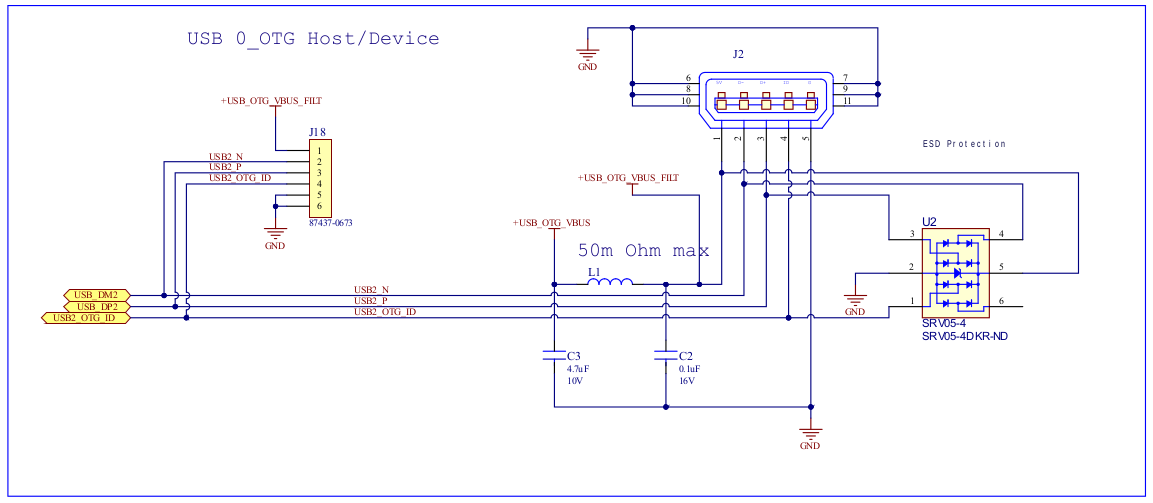
G3MSB USB 2.0 OTG Port Schematic¶
Footnotes:
- 15
Ground to make J18 a USB Host port.